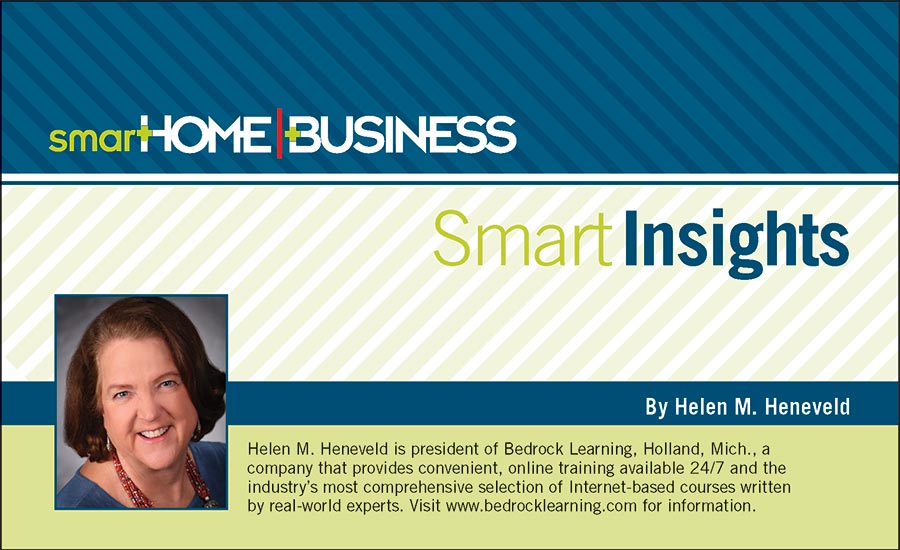Some folks may not know it but I started my own integration business, The Automation Link Inc. (TALI), in 1989 and put on the side of my van, “The Leader in Home Automation.” I was 20 years ahead of my time. Home automation hadn’t happened yet and it was easy to be the leader — there were no followers. Fast forward to today: I just returned from CEDIA Expo where connectivity, control, and artificial intelligence (AI) ruled. Today, numerous associations serve the industry, along with a plethora of magazines, newsletters and blogs.
Retail offerings abound, and are often add-ons to traditional security. That’s why back in the early ‘90s when every home we were installing automation and control in also had a security system, I became a licensed security installer. It was easy to earn $20 to $30 a month for standard security monitoring, but we were different; we offered automation of lighting and HVAC, along with remote home control. We only delivered security systems that included automation and our clients never questioned the $50 per month charge for professional security monitoring, remote home control, automatic setting of clocks for daylight savings time twice a year, and any automated scheduling edits. The 80/20 rule applied and only 20 percent of our clients ever asked for any automation scheduling changes, and it was easy to do via remote access. Albeit, I admit it was by a dial-up modem. Any way you look at it, we still earned $50 RMR from every one of our clients, and that helped cashflow.
Based on the 2017 SDM 100 Report, average RMR is $50.10, just about even with what my company was getting 24 years ago. Now, I am not bragging. I just want you to see that seeking out new opportunities, thinking outside the box, identifying what matters to your customers, and recognizing the value you bring to them all help validate and distinguish your services. Evaluate establishing an additional fee for the tangible and intangibles you deliver; it will be well worth it to both you and your customers. If your company’s RMR isn’t in the ballpark of the $50 average, do some research to see what RMR you already have, and look for new opportunities. (See “How to Build Your Average RMR With New Services,” at www.SDMmag.com/build-avg-rmr-with-new-services.)
The hottest new RMR opportunity is remote network and device monitoring and the network is the backbone of the Internet of Things (IoT). “Seventy-five percent of 2017 home security installations included smart control features and U.S. broadband households now have an average of 9.1 connected devices,” according to Parks Associates. Always-on connectivity is expected, whether it is streaming movies, remote access to
cameras, or adjusting the temperature. 24/7 monitoring of the network and connected devices can alert you when a device goes offline or Internet access is lost.
Unfortunately, in my business years ago, we only heard from customers when the system wasn’t working correctly. This caused them angst, and gave us a problem by requiring a truck roll ASAP — an expense we couldn’t charge for. Today, you can be alerted of network problems immediately, giving you the opportunity to proactively correct the situation remotely. This avoids an angry call from the customer, increases client satisfaction, and diminishes internal costs.
Start small with a minimal investment in a cool device I found at CEDIA Expo. Similar to a Nest thermostat, the IP NetConnect device is a one-time investment of $247 (catch the 24/7 play?) with no additional monthly fee. It can send email alerts when a device goes offline. This product goes one step further and makes it even easier for security dealers by integrating with Micro Key or Bold central station software. IoT device alerts are monitored in real time and dealt with similar to a low-battery or trouble signal from a standard security system. Rolling network and IoT alerts into your existing central station reporting just makes sense.
Get on board with network monitoring and expand your RMR. Spread the word, sing your song of proactive involvement, reap the praises of happy customers, and don’t forget to ask for referrals.



